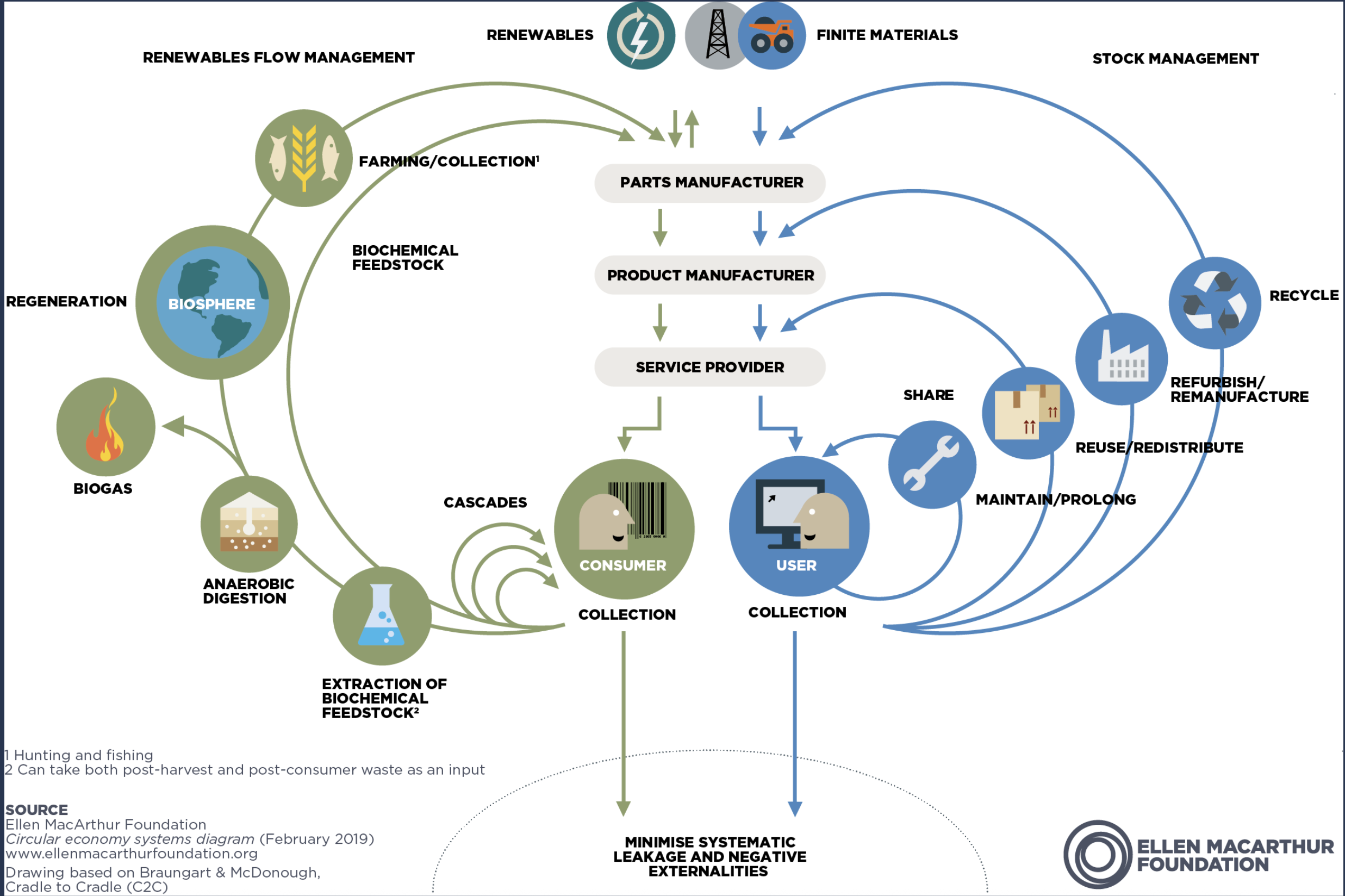WTF Is The Circular Economy?
The blank stare – I see it all the time.
People, even professionals, ask me what I do, and I tell them, “I help clients in the circular economy.” Their vacant expressions wordlessly say it all – “WTF is the circular economy? It sounds good and positive and all, but I don’t know what it is, exactly.”
Circular economics sits in the ESG (environmental, social and governance) family of business initiatives, and it covers a broad range of those, including energy and carbon management, supply chain and materials sourcing, product safety and quality and overarching business strategy. The table below shows a few, but this list is by no means comprehensive.
ESG (environmental, social and governance) business performance and value creation in the circular economy
In other words, recrafting materials and resources to circular ends can address a whole bunch of ESG issues.
Everybody knows recycling, which is scooping up what’s left of a product after use (like packaging) and looping it back into a(nother) use, like plastic water bottles turned into carpet, clothing and footwear. Or Amazon boxes recycled into office paper. Or way up the Eeuuuww! scale – water highly filtered from municipal sewage and returned to a water tap near you (‘coming in Arizona). But recycling really is a last resort in the circular-economic hierarchy, not the first. What if all waste could be eliminated altogether?
The grande dame of the circular economy is British luminary and world-class sailor, Ellen MacArthur (and yes, she really is knighted as a dame). Her eponymous foundation, the Ellen MacArthur Foundation, created a graphic explaining the various levels of circularity (see image below).
The Ellen MacArthur Foundation’s “Butterfly Diagram” showing the hierarchy in a circular economy.
On the left side of the graphic is the biosphere, natural stocks and flows of those stocks – like food, which is eaten and the residue of which (waste) goes back into producing more food. On the right side is the technosphere. Manufacturers use natural materials and turn them into products and other materials. Think of the ubiquitous yet undefined widget as a piece of machinery. Ideally, widgets are shared or maintained forever. Or given to others to reuse. ‘Worst case in the circular world, they’re recycled so they can be remanufactured and recreated as something else. Recycling can be an inefficient process, but it does keep materials in circulation.
Sadly today, most widget users toss them in the trash, so they wind up in landfill. What a colossal waste!
What Does It Look Like?
While recycling is the best-known circular strategy, it’s certainly not the only one, and circular products and services take many forms:
Anaerobic digestion – Manure from agricultural operations renders biogas and fertilizer for other farm operations.
Dematerialization - Content like music and books delivered electronically rather than in physical form.
Homes and buildings – Architects design buildings for deconstruction at end of life rather than demolition.
Packaging – IKEA uses mushroom-based packaging that biodegrades rather than Styrofoam that, like a zombie, lives in a landfill grave for forever.
Product as a service – Carpet manufacturer Interface offers carpet as a service rather than industrial rolls of floor covering that, when spent, get ripped up and tossed out.
Quality and durability play – U.S. company Shinola makes high-quality yet reasonably affordable watches that are built to last.
Resale – Clothing manufacturers like Patagonia and Levi’s offer both their new and gently used awesome clothes for resale.
Renting – Rent the Runway and other companies rent clothes. They deliver fun party frocks, you wear and send them back, they dry clean them and rent them again and again.
Reverse logistics – Loop takes back consumer packaged goods empties (like Tide, Heinz ketchup and Gerber baby food), cleans, refills and re-delivers them. Like old-school milk deliveries, also known as takeback schemes.
Right to repair – Thirty-three states and Puerto Rico have either considered or passed right-to-repair laws to do an end-run around planned obsolescence (‘Looking at you, Apple.)
Circularity may require a big re-think for some businesses, yet there’s money to be made in this. Firstly, consumers, especially Millennials and Gen Z, expect it and reward manufacturers who are down with circular. Second, circularity is more efficient and keeps products and materials at highest value possibly forever (like aluminum cans, which can be recycled infinitely). This is simply smart business because value is retained. Third, carbon-based anything is dirty, dusty, dangerous and expensive. Cut carbon out, and it usually means a lower production cost.
So next time you hear "circular" or the "circular economy", you now know it’s about designing waste out with the end in mind and preserving material and resource value. Circularity sits under the ESG umbrella, and it drives a number of other ESG initiatives. There are lots of strategies to achieve circularity. It’s all around us, and it’s only growing.
We are not legal, accounting or investment professionals, and we are not offering that type of advice here. While we hope our thought leadership ignites exciting, transformative avenues for your business, please consult with licensed, certified professionals to discuss your particular situation.






